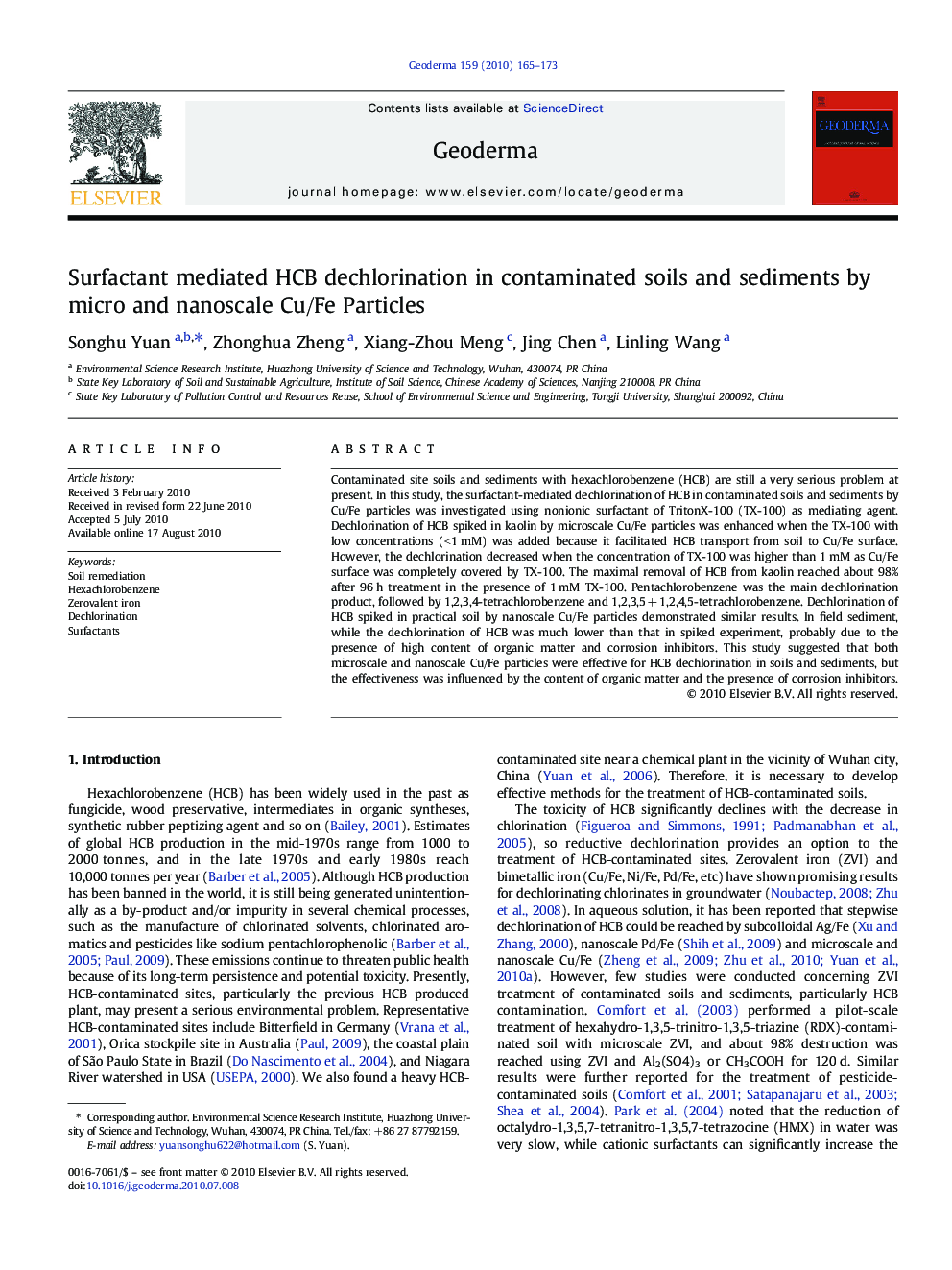| Article ID | Journal | Published Year | Pages | File Type |
|---|---|---|---|---|
| 4574541 | Geoderma | 2010 | 9 Pages |
Contaminated site soils and sediments with hexachlorobenzene (HCB) are still a very serious problem at present. In this study, the surfactant-mediated dechlorination of HCB in contaminated soils and sediments by Cu/Fe particles was investigated using nonionic surfactant of TritonX-100 (TX-100) as mediating agent. Dechlorination of HCB spiked in kaolin by microscale Cu/Fe particles was enhanced when the TX-100 with low concentrations (< 1 mM) was added because it facilitated HCB transport from soil to Cu/Fe surface. However, the dechlorination decreased when the concentration of TX-100 was higher than 1 mM as Cu/Fe surface was completely covered by TX-100. The maximal removal of HCB from kaolin reached about 98% after 96 h treatment in the presence of 1 mM TX-100. Pentachlorobenzene was the main dechlorination product, followed by 1,2,3,4-tetrachlorobenzene and 1,2,3,5 + 1,2,4,5-tetrachlorobenzene. Dechlorination of HCB spiked in practical soil by nanoscale Cu/Fe particles demonstrated similar results. In field sediment, while the dechlorination of HCB was much lower than that in spiked experiment, probably due to the presence of high content of organic matter and corrosion inhibitors. This study suggested that both microscale and nanoscale Cu/Fe particles were effective for HCB dechlorination in soils and sediments, but the effectiveness was influenced by the content of organic matter and the presence of corrosion inhibitors.
Research Highlights► Nonionic surfactant enhanced HCB dechlorination by Cu/Fe in soils. ► Dechlorination efficiency depended on surfactant distribution in soils and solution. ► Stepwise and incomplete dechlorination was reached.
